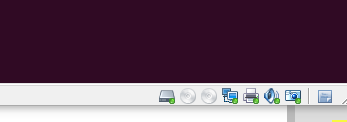Linux下opencv環境搭建,opcv2.4.9
最近做一個arm移植opencv的專案,在Linux虛擬機器上搭建了opencv環境,尋找了幾個教程,這個很靠譜;
OpenCV is the most popular and advanced code library for Computer Vision related applications today, spanning from many very basic tasks (capture and pre-processing of image data) to high-level algorithms (feature extraction, motion tracking, machine learning). It is free software and provides a rich API in C, C++, Java and Python. Other wrappers are available. The library itself is platform-independent and often used for real-time image processing and computer vision.
1.移除先前安裝的ffmpeg和x264
sudo apt-get -qq remove ffmpeg x264 libx264-dev
2.安裝依賴項
sudo apt-get -qq install libopencv-dev build-essential checkinstall cmake pkg-config yasm libjpeg-dev libpng-dev libtiff5-dev libjasper-dev libavcodec-dev libavformat-dev libswscale-dev libdc1394-22-dev libxine-dev libgstreamer0.10-dev libgstreamer-plugins-base0.10-dev libv4l-dev python-dev python-numpy libtbb-dev libqt4-dev libgtk2.0-dev libfaac-dev libmp3lame-dev libopencore-amrnb-dev libopencore-amrwb-dev libtheora-dev libvorbis-dev libxvidcore-dev x264 v4l-utils ffmpeg cmake qt5-default checkinstall
3.下載並解壓OpenCV
1 wget -O OpenCV-$version.zip http://sourceforge.net/projects/opencvlibrary/files/opencv-unix/$version/opencv-"$version".zip/download
2 unzip OpenCV-$version.zip
3 cd opencv-$version
4.編譯原始碼,構建OpenCV
mkdir build cd build cmake -D CMAKE_BUILD_TYPE=RELEASE -D CMAKE_INSTALL_PREFIX=/usr/local -D WITH_TBB=ON -D BUILD_NEW_PYTHON_SUPPORT=ON -D WITH_V4L=ON -D INSTALL_C_EXAMPLES=ON -D INSTALL_PYTHON_EXAMPLES=ON -D BUILD_EXAMPLES=ON -D WITH_QT=ON -D WITH_OPENGL=ON .. make -j2 sudo make install sudo sh -c 'echo "/usr/local/lib" > /etc/ld.so.conf.d/opencv.conf' sudo ldconfig
5.測試OpenCV是否安裝成功
自動編譯opencv檔案程式碼:
#!/bin/bash
echo "compiling $1"
if [[ $1 == *.c ]]
then
gcc -ggdb `pkg-config --cflags opencv` -o `basename $1 .c` $1 `pkg-config --libs opencv`;
elif [[ $1 == *.cpp ]]
then
g++ -ggdb `pkg-config --cflags opencv` -o `basename $1 .cpp` $1 `pkg-config --libs opencv`;
else
echo "Please compile only .c or .cpp files"
fi
echo "Output file => ${1%.*}"
將此程式碼儲存成指令碼檔案,在呼叫時把要編譯的opencv檔案作為引數傳進去;
附上編寫的一個簡單的人臉檢測程式;
#include <opencv2/highgui/highgui.hpp>
#include <opencv2/imgproc/imgproc.hpp>
#include <opencv2/core/core.hpp>
#include <opencv2/objdetect/objdetect.hpp>
#include <iostream>
using namespace std;
using namespace cv;
void Face_detect(Mat& img,CascadeClassifier& face_cascade,CascadeClassifier& eye_cascade,double scale);
int main(int argc,char *argv[])
{
if(argc<2)
{
cout<<"please input your 'scale'\n"<<endl;
return -1;
}
if(atoi(argv[1])>9)
{
cout<<"please input the number between 0&9\n"<<endl;
return -1;
}
//定義聯機分類器類;
CascadeClassifier face_cascade,eye_cascade;
//載入人臉檢測和眼鏡檢測模型;
face_cascade.load("/usr/share/opencv/haarcascades/haarcascade_frontalface_alt2.xml");
eye_cascade.load("/usr/share/opencv/haarcascades/haarcascade_eye.xml");
//開啟攝像頭
VideoCapture cap(0);
if(!cap.isOpened())
{
return -1;
}
//定義Mat變數
Mat frame;
//迴圈進行人臉描框和顯示;
bool stop=0;
while(!stop)
{
//提出圖片
cap>>frame;
//檢測
Face_detect(frame,face_cascade,eye_cascade,atoi(argv[1]));
//如果有按鍵按下,退出;
if(waitKey(30)>=0)
stop=1;
//顯示;
imshow("face",frame);
}
return 0;
}
//人臉檢測程式;
void Face_detect(Mat& img,CascadeClassifier& face_cascade,CascadeClassifier& eye_cascade,double scale)
{
const static Scalar colors[] = {
CV_RGB(0,0,255),
CV_RGB(0,128,255),
CV_RGB(0,255,255),
CV_RGB(0,255,0),
CV_RGB(255,128,0),
CV_RGB(255,255,0),
CV_RGB(255,0,0),
CV_RGB(255,0,255)} ;
int i=0;
vector<Rect> faces;
//初始化灰度影象和縮小影象,定義scale(縮小尺寸)
Mat gray, smallImg(cvRound(img.rows/scale),cvRound(img.cols/scale),CV_8UC1);
//將影象轉換成灰度影象;
cvtColor(img,gray,CV_BGR2GRAY);
//將灰度圖縮小;
resize( gray,smallImg,smallImg.size(),0,0,INTER_LINEAR);
//直方圖均值化處理;
equalizeHist( smallImg, smallImg );
//檢測人臉;
face_cascade.detectMultiScale( smallImg, faces,1.1, 2, 0|CV_HAAR_SCALE_IMAGE,Size(10, 10));
//將檢測到的每個人臉框出來;
//r是指向faces矩形的指標;
for(vector<Rect>::const_iterator r = faces.begin(); r != faces.end(); r++,i++)
{
Point vertex1,vertex2;
Scalar color = colors[i%8];
Mat ImgROI;//眼睛區域;
vector<Rect> eyes;
//儲存人臉矩形的兩個頂點,等比例放大;
vertex1.x=r->x*scale;
vertex1.y=r->y*scale;
vertex2.x=(r->x+r->width-1)*scale;
vertex2.y=(r->y+r->height-1)*scale;
rectangle(img,vertex1,vertex2,color,2); //將人臉框出;
if(eye_cascade.empty())
continue;
ImgROI=smallImg(*r);//*r是(縮小灰度)人臉矩形;
//檢測眼睛;
eye_cascade.detectMultiScale(ImgROI,eyes,1.1,2,CV_HAAR_SCALE_IMAGE,Size(5,5));
for(vector<Rect>::const_iterator er=eyes.begin();er!=eyes.end();er++)
{
vertex1.x=(r->x+er->x)*scale;
vertex1.y=(r->y+er->y)*scale;
vertex2.x=(r->x+er->x+er->width-1)*scale;
vertex2.y=(r->y+er->y+er->height-1)*scale;
rectangle(img,vertex1,vertex2,color,2); //將眼睛框出;
}
}
}
在呼叫此程式時,需要傳入一個引數,0-9的雙數,表示用來檢測的圖片的縮小規格;
在呼叫此函式時,注意將虛擬機器上攝像頭開啟;

